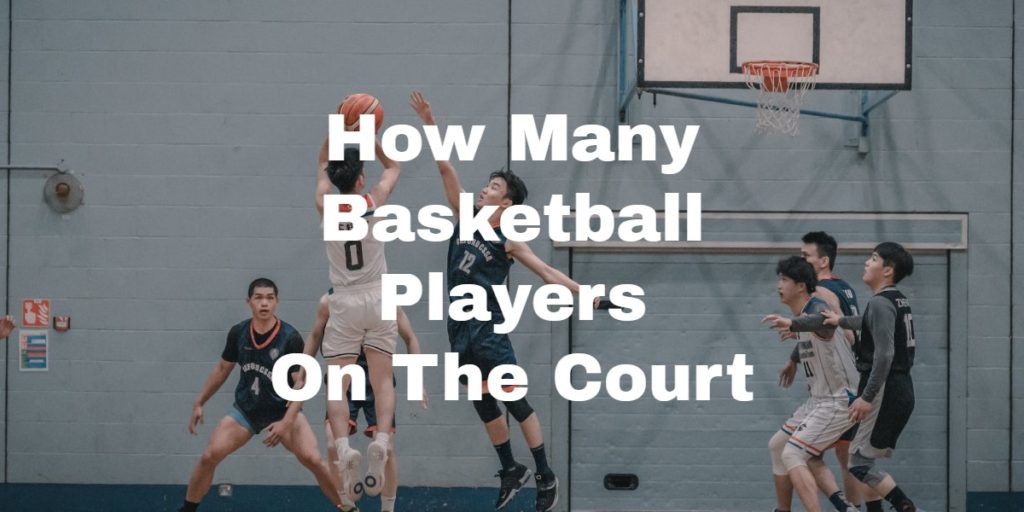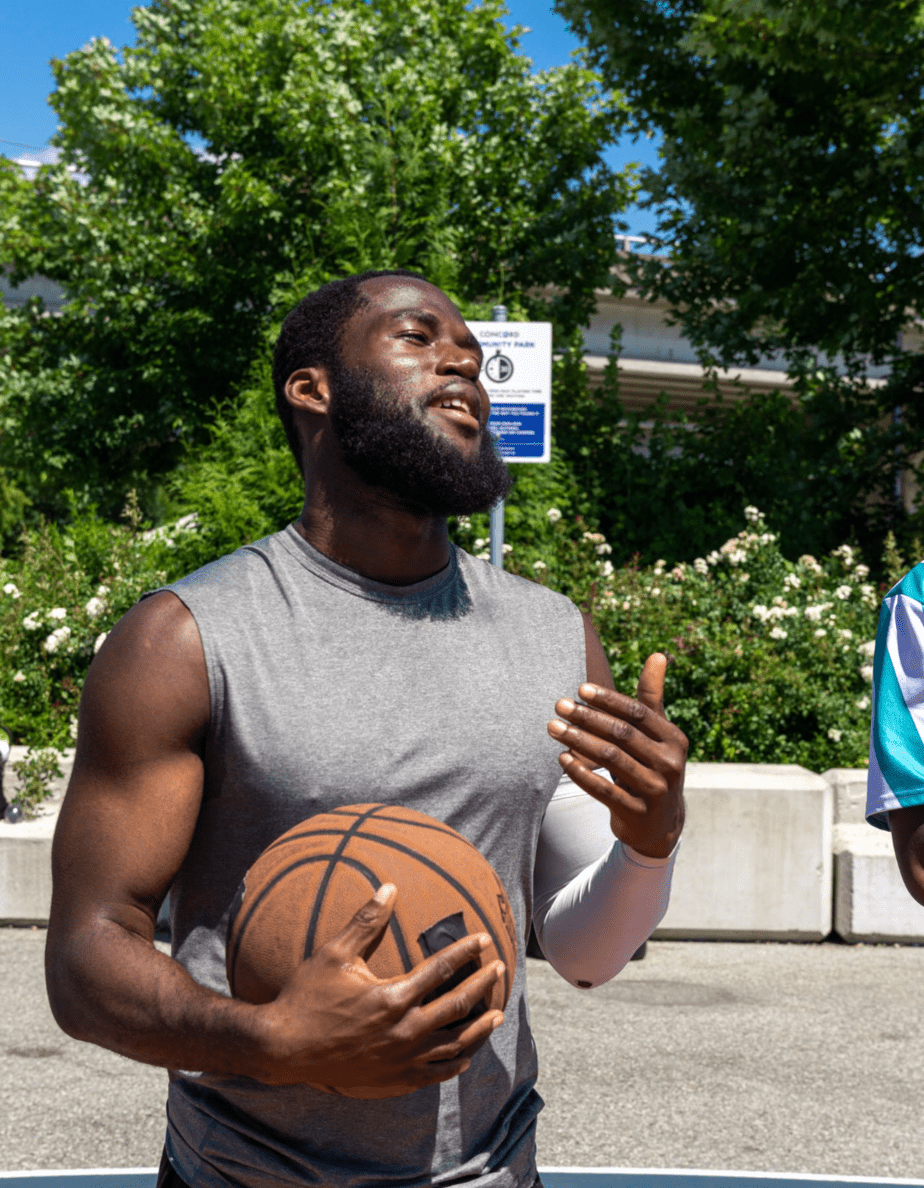How Many Basketball Players Are Allowed On The Court and Position Breakdown
If you found this article you have likely been pondering the question: “How many basketball players are on the court?” The answer may seem simple at first glance, but let me tell you, there’s more to it than meets the eye. We’ll dive into not only the number of players on the court but also their roles, positions, and some famous faces who have revolutionized the game.
Number of Basketball Players on the Court
Standard Number of Players per Team
In both professional and college basketball, as well as international and Olympic competitions, there are usually five players per team on the court. This setup is often referred to as 5-on-5 basketball. However, don’t let that number fool you; there are some alternatives you might find interesting.
Alternatives to 5-on-5 Basketball
3-on-3 Basketball: I used to play in the old “Hoop it Up” 3-on-3 half-court basketball tournaments, this variation features three players per team. I just realized that the organization still exists. In recent years, it has gained popularity and even made its Olympic debut in 2020.
Interesting aside, while researching this I noticed that fellow Fremont Tiger alumni, Mitch Hahn, was on the 2022 3-on-3 Hoop It Up Pro-Am championship team as pictured below.

1-on-1 Basketball: The ultimate showdown, 1-on-1 basketball is all about individual skill and determination. It’s the perfect way to practice your moves and challenge your friends.
Factors Affecting the Number of Players on the Court
Injuries and Substitutions
Basketball can be a physically demanding sport, and players may need to take a break or deal with injuries. Substitutions can temporarily alter the number of players on the court.
Disqualifications and Ejections
If a player racks up too many fouls or engages in unsportsmanlike conduct, they may be disqualified or ejected from the game, leaving their team short-handed if there are no substitutes available on the bench.
What Happens If An Entire Basketball Team Fouled Out?
So what would happen if an entire basketball team fouled out? How many players would be left on the court?
That is extremely unlikely in the NBA, NCAA, or even high school. But in general, all leagues, including youth and recreational leagues follow similar rules. Teams must have at least (4) four players in order for the game to start, but a team may play with less than 4 if players foul out or have to leave the game due to injury.
Roles and Positions of Basketball Players
As I mentioned earlier, basketball is all about teamwork. Each player has a specific role and position, making them a crucial cog in the well-oiled machine that is their team. Let’s break down these positions and their responsibilities.
Point Guard (PG)
Responsibilities: The point guard is the team’s floor general, responsible for directing the offense and making key decisions. They set up plays, control the tempo, and keep the team organized.
Skills Required: A point guard needs excellent ball-handling skills, court vision, quick decision-making, and leadership abilities. They should also be effective shooters and passers.
Shooting Guard (SG)
Responsibilities: The shooting guard, also known as the off-guard or “two-guard,” is primarily focused on scoring. They create their own shot opportunities and capitalize on scoring chances.
Skills Required: Shooting guards must be proficient shooters, especially from long range. They also need good ball-handling skills, the ability to create space, and a knack for driving to the basket.

Small Forward (SF)
Responsibilities: Often considered the most versatile player on the court, the small forward is a jack-of-all-trades. They contribute to scoring, rebounding, and defense, taking on various responsibilities as needed.
Skills Required: Small forwards must be adaptable, with well-rounded skills in shooting, passing, and dribbling. They should also have a solid defensive presence and a strong basketball IQ.
Power Forward (PF)
Responsibilities: The power forward, sometimes called the “four,” is a key player in the paint. They focus on rebounding, scoring close to the basket, and providing interior defense.
Skills Required: Power forwards need to be strong and physical, with a solid understanding of positioning and boxing out. They should also have a reliable mid-range shot and the ability to pass effectively.
Center (C)
Responsibilities: The center, or “five,” is the team’s anchor. They dominate the low post on both offense and defense, protecting the rim and grabbing rebounds.
Skills Required: Centers must be tall, strong, and have excellent shot-blocking abilities. They should also have a repertoire of low-post moves and be able to finish around the basket.
The Basics of Basketball
Before we get into the nitty-gritty details of player count, let’s take a quick trip down memory lane. Basketball was invented in 1891 by Dr. James Naismith, a Canadian physical education instructor looking for a new indoor sport. Fast forward to today, and basketball has evolved into a beloved game that emphasizes teamwork, strategy, and athleticism.
Rules and Regulations
Game Duration
A professional basketball game consists of four 12-minute quarters, while college games have two 20-minute halves. If the game is tied, it goes into overtime periods until a winner is determined.
Scoring System
Teams score by shooting the ball through the hoop. A field goal is worth two points, while a three-pointer is, you guessed it, three points. Free throws earn teams a single point each.
Fouls and Penalties
Players can be penalized for violations like traveling, double dribbling, or making illegal contact with opponents. Repeated fouls can lead to free throws for the opposing team, and if a player accumulates too many fouls, they may be disqualified from the game.
Famous Basketball Players and Their Positions
Legends of the Game
Widely regarded as the greatest basketball player of all time, Jordan was an unstoppable shooting guard or wing who led the Chicago Bulls to six NBA championships.
A versatile small forward, LeBron has been a dominant force in the NBA for nearly two decades, earning four championships and numerous MVP awards.
Magic Johnson
One of the best point guards in history, Magic was known for his incredible court vision and flashy passes, guiding the LA Lakers to five championships during the “Showtime” era.
Larry Bird
A small forward with an unparalleled basketball IQ, Bird led the Boston Celtics to three championships and is considered one of the greatest shooters of all time.

Rising Stars and Their Positions
Luka Dončić
A prodigious point guard from Slovenia, Dončić has taken the NBA by storm with his exceptional passing, scoring, and clutch performances.
Zion Williamson
A power forward with jaw-dropping athleticism, Williamson is known for his thunderous dunks and powerful presence in the paint.
Jayson Tatum
A talented small forward, Tatum has emerged as a go-to scorer and leader for the Boston Celtics, showcasing his impressive offensive arsenal.
Ja Morant
A lightning-fast point guard, Morant has quickly made a name for himself with his acrobatic finishes and playmaking abilities.
Conclusion
And there you have it—a complete breakdown of the number of basketball players on the court and their roles! Understanding these positions and responsibilities adds a whole new layer of appreciation for the game. So, next time you watch a basketball game or hit the court yourself, remember the vital roles of each player.
Frequently Asked Questions
How many basketball players are there on a team?
A standard basketball team has 12 to 15 players on the roster, but only five players from each team are allowed on the court at a given time during a game.
What are the main positions in basketball?
The five main positions in basketball are point guard (PG), shooting guard (SG), small forward (SF), power forward (PF), and center (C). Each position has specific roles and responsibilities on the court.
What is the difference between 5-on-5 and 3-on-3 basketball?
5-on-5 basketball is the traditional full-court game with five players per team on the court. 3-on-3 basketball features three players per team and is played on a smaller court with only one basket.
What happens if a player accumulates too many fouls in a game?
In basketball, if a player accumulates a certain number of personal fouls during a game, they may be disqualified or “foul out.” In the NBA, the limit is six fouls, while in college basketball, the limit is five fouls.
Why is it important to understand basketball positions and their roles?
Understanding basketball positions and their roles helps players and fans appreciate the game’s intricacies and strategies. It highlights the importance of teamwork, as each player’s role contributes to the overall success of the team.
Troy Wallace
Troy Wallace is Certified Basketball Speed Specialist and shares his experiences in trying to stay as healthy as possible to stay on the court. He is active in coaching youth basketball in YMCA, Team Work Sports Nebraska, and, currently, in the Jr. Warriors program in Omaha, NE. Visit Troy's Full Author Bio Page or email him directly.
Meaningful conversations happening daily about training, recovery, and injury-specific rehabilitation as well as sport-specific discussions on playing, coaching and refereeing your favorite sport. We welcome experts and those with curious minds seeking answers.
Join The Stay On The Court Community!